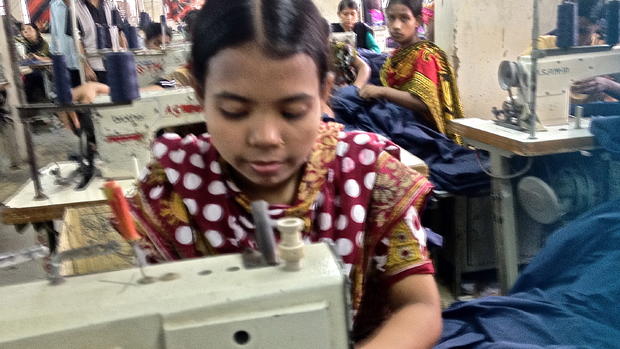Danger still lurks in Bangladesh garment factories
In the 11 months since 1,127 garment workers died in a factory building collapse in Bangladesh, it appears not much has changed to improve conditions. Inspections were called for in the wake of the tragedy, but in just the first 10 of some 1,500 planned inspections, safety officials reportedly uncovered locked fire exits, exposed electrical cables chewed by rats and overloaded ceilings.
As a result of the inspections, one company that made clothing for a French company reportedly laid off all of its 3,500 workers this week because inspectors told management of "serious structural problems," forcing the factory to close.
The collapse of Rana Plaza in April 2013 was the result of structural weakness. The building complex, set on a swamp, was reportedly constructed without the correct permits. Even after cracks were noticed in support pillars, employees were allegedly told to continue working.
The inspections are yet more evidence that the garment manufacturing industry, whose low wages and poor conditions help subsidize modest consumer prices in the U.S. and Europe, is in fundamental trouble and that workers are often on the front line of the suffering.
The abuses are reportedly wide sweeping across the industry. According to a BBC report from last fall, it is common for workers to be locked into a factory for brutally long stretches of time. The reporter, who went under cover as a buyer for a fake British clothing manufacturer, was told that shifts always ended at 5:30 at night and was even given a doctored time sheet for one that he secretly observed run 19.5 hours, from 7 a.m. to 2:30 the next morning.
According to experts, policing factories in the developing world is difficult. Factory owners often operate on thin margin and for that reason have disincentives to invest in safety or better working conditions, particularly if they don't think their competitors will be forced to do the same. It is also common for factory owners to falsify information and pressure workers to answer questions in ways that will make the business look good.
Western companies may have some culpability, as they try to avoid monitoring factories too closely, lest they be considered "joint employers" and be found legally liable for dangerous conditions. Meanwhile, they push back on the prices they will pay for goods, putting the factory owners under even greater pressure to lower costs by whatever means.
The sad irony is that labor costs represent a tiny fraction of the price consumers pay. According to a 2011 study by management consulting group O'Rourke Group Partners, a $14 polo shirt costs a retailer about $5.67, representing about an almost 60 percent profit margin. (The numbers are in Canadian dollars, but the proportions would be roughly the same in the U.S.). The cost of the labor for the shirt would be only 2 percent of the cost to the retailer, or less than 1 percent of the consumer's cost.
Multiplying workers' wages by ten times would raise the price of the shirt by just over $1. And according to at least one workers' rights group, fixing all of Bangladesh's factories would cost $3 billion, or about 30 cents per garment.
